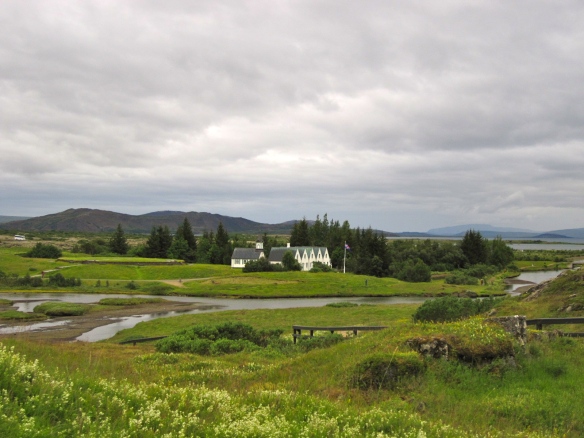Today the complete translated Icelandic Sagas were published for the first time in Danish, Swedish and Norwegian. The publisher is Saga Forlag in Reykjavík and around 100 people have assisted with this year-long task and five volumes are published in each of the three languages. The project was initiated in 2006 by the publisher Jóhann Sigurðsson who, together with Viðar Hreinsson, also led the earlier translation of the Sagas into English. Queen Margrethe II of Denmark, King Harald V of Norway og Gustav XVI Adolf King of Sverige have written the introductions and leading researchers from all of Scandinavia have participated in the scholarly work and discussions leading up to the publication this spring.
Harpa, Reykjavík
At the official celebration today April 28 in the Harpa Music Hall the cultural history of the Sagas was addressed by the Icelandic prime minister and the minister for culture and education. Here it was pointed out that the Sagas have gone through a transition from a framing as national heritage to regional and even global heritage. The Medieval literature has been used an important point of reference in the Icelandic nation building process (the same may be said for at least the Danish national romantic period) and the demand for the returning of manuscripts from Copenhagen to Iceland that was commenced i the 19th century led to a dispute in the middle of the 20th century between the two countries that reflected the historical inequality and tension. In this way the Icelandic parliament’s strong support of the publication in Danish, Norwegian and Swedish marks a softening of the national agendas in this area at least.
The Icelandic prime minister furthermore announced that the Sagas will be available for the public on the internet in the future. In this way this collection of Norse literature will be shared with the Scandinavian readers in more than one way.
Research professor Gísli Sigurðsson is a researcher of oral tradition and ancient Norse culture and was one of the representatives on the Árni Magnússon Research Institute for Icelandic studies. In his talk he described the cultural landscape of the creation of the Saga texts and described this early Icelandic tradition with the metaphor of a volcanic eruption. As scholars such as Jón Yngvi Jóhannsson and Ástráður Eysteinnsson have shown the tradition for describing Icelandic literature as forces of nature was strong in the 20th century.
Website of Frankfurt Book Fair 2011
As I have discussed earlier in an article on the Frankfurt Book Fair in the journal Ritið this strategy is still primary strategy for marketing Icelandic literature and it is promoted by Icelanders as well as foreign journalists and critics. https://annsofiegremaud.wordpress.com/2013/04/08/otherness-as-branding-strategy-for-literature-and-nature/




